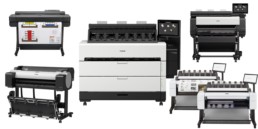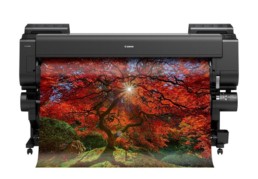If you found your way to this blog post, you are probably looking for a new plotter! Whether this is your first piece of equipment or you’re looking to upgrade, you’ve probably noticed that on the web there aren’t a lot of consumer reviews or expert opinions. I hope to end that problem and provide some insight for you as you work towards making your next plotter purchase. Which, (shameless plug) I’d greatly appreciate a chance to quote for you! andy@richteronline.com.
For this post I’m going to hone in on technical plotters. These plotters are geared towards line drawings, aerials, schematics, etc. We do also sell and promote the graphics plotters from HP, Canon, and Epson, and I plan to do a follow up post to give more insight to their respective lines as well. Those would be for those who are printing photographs, posters, banners, etc.
In this post I will be highlighting Canon and HP. Epson deserves to be in this space as well, but I have much more experience with Canon and HP. We have been authorized resellers of their lines for much longer. Also, please know that these opinions are my own, and that I feel lucky to have great relationships with both of these manufacturers. I truly do believe that they each make fabulous equipment and I make case-by-case recommendations based on the individual. I am not being compensated in any way for writing this post. Alright with that out of the way, let’s get to it!
The first question you should ask yourself when considering a plotter purchase is, “How much am I going to print?” Each manufacturer builds a line that fits users that print anywhere from a handful of drawings per week to a hundred drawings per day. It’s not enough, however, to establish general print volume. I would also encourage you to consider your average batch size. There is a difference between printing 50 drawings per day in 5 sheet batches, and 50 drawings per day that you print all at once. Drop yourself into one of these brackets:
– Lowest: Printing 5 s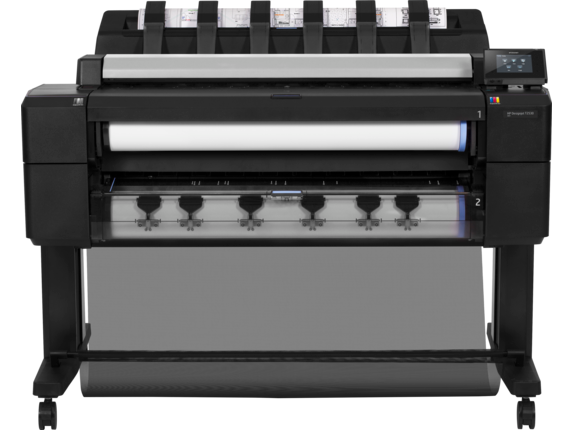 heets per week or less
heets per week or less
– Low-Low: Printing 5 sheets per day or less, batches are 5 sheets or less
– Mid-Low: Printing 5-20 sheets per day, batches 5 sheets or less
– Mid-Mid: Printing 5-20 sheets per day, batches 5 to 20 sheets
– High-Mid: Printing 20-50 Drawings Per Day in batches of 20 sheets or less
– High-High: Printing 20-50 Drawings Per Day in batches of 20-50
– Max: Printing 50+ drawings per day
Next, let’s look at scanning needs. Scanning, in my opinion, mostly comes down to convenience. Getting scans done at a local repro shop isn’t expensive, but it does involve corralling your originals, getting in your car, waiting for them to be scanned, putting them on a flash drive or having them e-mailed to you, and then driving back. If you decide you do need a scanner, do you just need something for record keeping, or is scanning accuracy of utmost importance to you? Put yourself into one of these brackets:
– No scan: I don’t need scanning
– Reference Scanning: I will do low-volume scanning and for reference only
– Professional Scanning: I need to be able to batch scan at high volumes or I need high-DPI scanning for high-fidelity reproduction and electronic storage
Next one is an easy one: do you need a single roll, or double roll? If you are printing two different sizes interchangeably, getting a plotter with two rolls is very helpful to minimize the time changing out rolls. Note: double roll units are only available on the higher-echelon plotters.
– Single Roll
– Double Roll
Last thing to consider would be print width. Technical plotters are either 24”, 36” or 44” wide. 90% of the machines we sell are 36” wide. If your volume is low though (think “lowest” from our earlier bracket), you’re probably fine with a 24” machine, and maybe even if you fit yourself into “low-low.” On the other side, if you are one of the folks who absolutely HAS to print 44” wide, congratulations, you just cornered yourself into one of two options. 😊 Luckily, they’re both worth recommending.
I would also add, that in my opinion, pretty much all of these machines are worth recommending. It just depends on the person(s) using it. I wouldn’t recommend a half-ton truck to an environmentalist or a roadster to a family of 7 – you need to look for the machine that best suits the user.
Alright, got your selections? Here we go!
– Lowest, No scan, 24”
o Andy’s Pick: HP T120
o A fine second option: Canon iPF670E
The HP T120 has a nice little touchscreen, an easy to use bypass tray for sheets, and is compact in form factor. It loses some points because the ink is less efficient than Canon’s, but the HP is still better overall
– Lowest or Low-Low, No Scan, 36”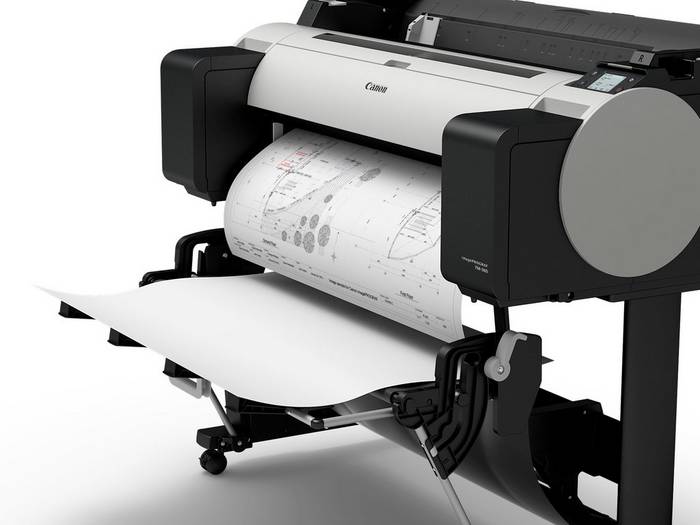
o Andy’s Pick: Canon TM-300
o An OK second option: HP T730
Just released, this past fall, I’m a big fan of the TM-300 (and the TM-305, see below). They give you the ability to load 500’ Rolls (compared to HP T730’s 150’ rolls). This means less roll switching and lower paper costs. Also, ink cost per square foot is lower on the Canon as well. Upgrades to the control panel over Canon’s previous model, the iPF780, and addition of WiFi connectivity makes the Canon a no-brainer
– Mid-Low, No Scan, 36”
o Andy’s Pick: Canon TM-300
Really the only unit that fits this group in my opinion, the TM-300 is a great option for those who find themselves here. For more notes on the TM-300, see above.
– Mid-Mid, No Scan, 36”
o Andy’s Pick: Canon TM-305
Again, the only unit that fits into this group but it’s a great machine, and honestly I think the TM-305 or TM-300 could fit almost 90% of users. It’s a great machine that improves on the TM-300 by adding an internal hard drive, 20 sheet stacking basket, and USB port for printing from a thumb drive. It’s also only a couple hundred bucks more than the TM-300, so you might want to go for it even if you don’t think you need it.
– High-Mid, No Scan, 36”
o Andy’s Single Roll Pick: Canon TM-305
o Andy’s Double Roll Pick: Canon TX-3000 DR
The Canon TM-305, again, fits almost 90% of users. The 500’ roll is a huge difference maker for paper costs (HP’s T930/1530 max at 300’). I can’t speak for everyone that sells wide format paper, but our cost difference between 300’ and 500’ rolls of paper is a couple bucks, so the 500’ rolls drastically reduce total ownership costs. If you need a double roll option, the Canon TX-3000 DR is probably more than you need, but it costs roughly the same as HP’s T1530. Frankly, I think it blows the T1530 away, so might as well go for the TX-3000. For more notes on the TX-3000, see the “Max, No Scan” section.
– High-High, No Scan, 36”
o Andy’s Single Roll Pick: HP T930ps
o Andy’s Double Roll Pick: Canon TX-3000 DR
HP’s T930 has a great 50 sheet stacker, and that’s the primary reason it gets an edge over the TM-305 in this scenario. If you’re batching out jobs bigger than 20 sheets with regularity, the 20 sheet basket just isn’t going to cut it. Conversely, the TX-3000 with it’s 100 sheet stacker is more expensive and might be hard to justify over the T930. When it comes to double roll options in this space, same as above. The TX-3000 is better, and is roughly the same cost as the T1530.
– Max, No Scan, 36”
o Andy’s Single Roll Pick: Canon TX-3000
o Andy’s Double Roll Pick: Canon TX-3000 DR
Canon has done a lot right these past 18 months, starting with the release of their TX series. The TX series is incredibly robust, with a duty cycle of up to 18,000 square feet per month. It’s got a 100 sheet stacker that frankly could probably stack 120 sheets or more, but they have to rate it conservatively for obvious reasons. It takes 500’ rolls, and can even take up to 700 mL ink cartridges, giving unparalleled low-cost printing. The consumable cost actually rivals laser machines, which is a huge step forward for technical plotters. This thing is a tank, and it can take a beating. I have been nothing but impressed with these machines.
– Lowest, Low-Low, or Mid-Low, Reference Scanning, 24” or 36”
o Andy’s Pick for ease of u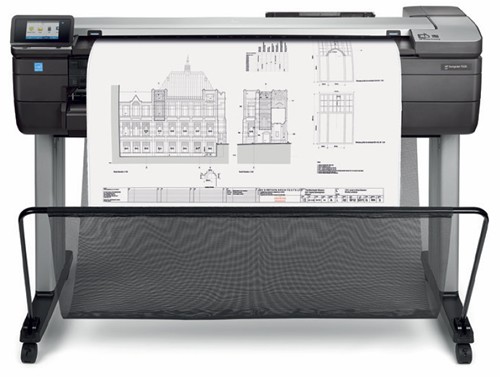 se: HP T830 (24” or 36”)
se: HP T830 (24” or 36”)
o Andy’s Pick for the technically minded: Canon TM-200 MFP L24ei/Canon TM-300 MFP L36ei
The really defining factor for me in this decision is actually ease of use. The TM series from Canon is more robust and offers better scanning options and also has the same advantages as above (500’ roll capacity vs 150’, better ink costs). However, the HP T830 is simply way easier to use. If you feel like you’re able to get into a more complex control panel with tons of options, I’d go for one of the Canon’s. If you need simple operation, go with the HP. I would also recommend you go with the Canon if printing is more important than scanning
– Mid-Low, Professional Scanning, 36”
o Andy’s Pick: Canon TM-300 MFP T36
Canon also gives the option of pairing their TM-300 plotter with their higher-end T36 scanner. This scanner is amazing. And luckily, they also pair it with the TM-305 and the TX series as well. You can run a scan, and before officially saving, you have the option to edit the scan. You can remove stains by adjusting black and white point, crop the image, tilt adjust, and inverse colors (handy for those old blueprints). It’s entirely possible for you to put in an old drawing and have it come out better than the original.
– Mid-Mid, Professional Scanning, 36”
o Andy’s Pick: Canon TM-305 MFP T36
I love this scanner for all of the reasons mentioned above, and Canon pairs it with the extra advantages of the TM-305. 20 sheet stacking basket, USB drive, and internal hard drive. Win-win!
– High-Mid, Reference Scanning, 36”
o Andy’s Single Roll Pick: Canon TM-305 MFP T36
o Andy’s Double Roll Pick: HP T2530ps
HP does pretty much everything right with the T2530. It’s incredibly compact, integrates a 50 sheet stacker, has 2 rolls, and the scanner sits right on top. The scanner isn’t as robust as the T36 on Canon’s machines, but it does the job. For single roll, again, I think the Canon TM-305 MFP T36 shines.
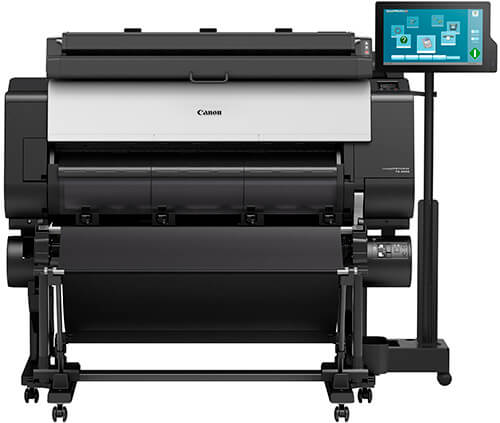
– High-High or Max, Reference or Professional Scanning, 36”
o Andy’s Single Roll Pick: Canon TX-3000 MFP T36
o Andy’s Double Roll Pick: Canon TX-3000 DR MFP T36
Canon pairs the beastly TX-3000 with the best scanner on the market. If you need the most complete wide format printer you can get, the TX-3000 MFP T36 is it. As previously mentioned, it has the 18,000 square foot per month duty cycle, 100 sheet stacker, up to two 500’ roll capacity, and up to 700 mL ink cartridges. There is ONE thing I don’t like about this printer, but the good of the decision outweighs the bad. What I don’t like is that to load roll one, you have to lift the scanner, and then the front cover, and then the roll cover to get access to it. The reason the good outweighs the bad is because the way they designed it allows you to load the roll from the front, AND have prints come out in the front, something that no one else has been able to do. I’ll take the slightly annoying roll load in favor of those benefits. I also should note that if you opt to add the second roll, the second roll is accessible without those steps, so keep your most frequently used size on roll two.
– So you need a 44” printer…
o Andy’s Pick: Canon TX-4000 (Single Roll or Double Roll, MFP or Print-Only)
o A fine second choice: HP T1700 (Single Roll or Double Roll)
The Canon TX-4000 is the exact same machine as the TX-3000 series (which obviously you know by now has single or double roll configurations, and the option of adding the scanner). All of the normal beastliness of the TX-3000 but in a 44” form factor. If you aren’t feeling the TX-4000, HP does have a 44” option as well in the T1700, but there’s really no contest between the two. It has no stacker at all, so all prints just drop into the basket below the printer. It does have a nice updated control panel, but other than that, the TX-4000 rules the day between the two.
Did I raise more questions than I answered? Shoot me an e-mail or give me call. I’m always happy to help. 215-723-3900 / andy@richteronline.com.
Related Posts
September 10, 2021
Picking the Perfect Plotter For Your Needs – v2.0
October 17, 2016
Plotters – The Office Game Changer
February 22, 2016
